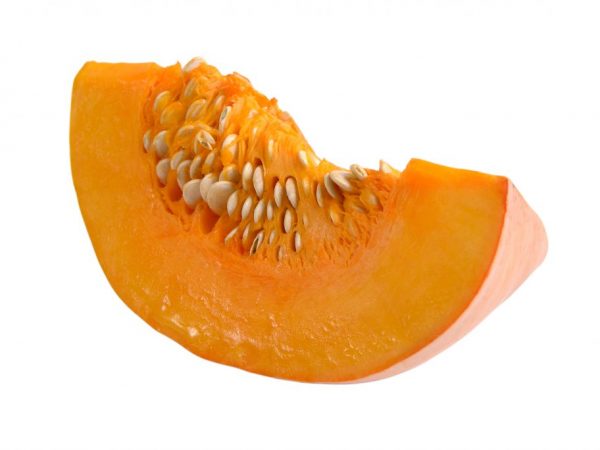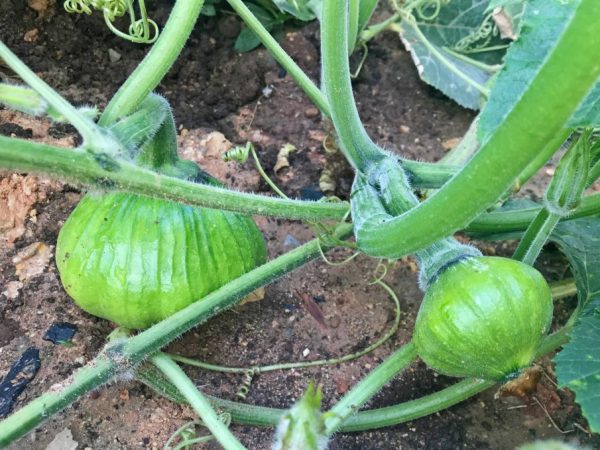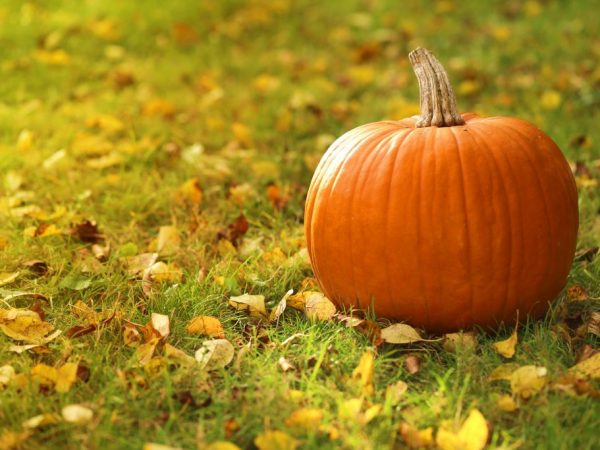Honey pumpkin
Every summer resident is engaged in the cultivation of pumpkin, because this culture has unique beneficial properties and is an excellent product for preparing delicious dishes.

Honey pumpkin
Honey pumpkin has earned great popularity among gardeners due to several qualities - early maturity, unusual honey taste and ease of cultivation.
Description of the variety
Positive characteristics include:
- honey flavor and aroma;
- fruits of a standard size - 3-4 kg;
- unpretentiousness in care and cultivation;
- good keeping quality and and preservation of presentation;
- among all varieties and hybrids, it has the most juicy and sweet pulp.
This culture has two drawbacks - almost all varieties do not grow well under the sun, which is why they wither, dry out and stop bearing fruit.
The second point is that all varieties are long-leaved, therefore, when growing, they require a lot of space on the site.
Varieties
Thanks to the efforts of breeders, many interesting varieties of Honey Pumpkin have appeared.
All of them have a pronounced nutmeg taste, but differ significantly in appearance, shape and characteristics:
- Openwork honey. The pulp is sweet, tasty, used to prepare various culinary dishes. One of the varieties suitable for dietetic nutrition and complementary foods for babies. Fruits are round, ribbed, with a thick skin, weighing from 3 to 6 kg.
- Honey beauty. The description indicates that this is the most delicious variety. Pumpkins are rounded with pronounced lobules. The average weight is 5 kg. Orange peel with green splashes. An early ripe hybrid with fruit ripening for about 90 days.
- Pumpkin of the Honey Orange variety has a juicy and sweet pulp, suitable for fresh consumption. The largest mass of fruits is 2 kg. The pulp is orange, easy to process. Ripens in 4 months. The variety is climbing, therefore it requires a lot of space on the site.
- Pumpkin Honey crumb. Fruits are round in shape, ashy with a pale pink spot. Average weight 3-3.5 kg. The thick skin contains dense, bright orange flesh. The crumb tastes very sweet.
- Honey tale. Medium-sized fruits - about 3-4 kg. Ripe pumpkins have a uniform orange color. The pulp is very sweet.
- Honey August. The fruits are oval pear-shaped. The skin is dark green with light green blotches. The thick, smooth skin contains an orange, very sweet, crunchy flesh. The fruits of the honey August variety are rich in vitamins, minerals and contain a large amount of carotene.
- Honey dessert. Fruits are orange in color, rounded, slightly flattened. The pulp is sweet. There is a small depression in the area of the stalk. Reaches large sizes - from 5 to 10 kg.
- The Honey Princess is a large-fruited pumpkin of bright orange color. The shape is round, slightly flattened, the weight varies from 3 to 10 kg. It is a climbing variety that ripens in 4-4.5 months.
- Honey Tokyo f1. Mid-season hybrid with ashy skin. Fruits are round or oval in shape, slightly ribbed, weighing from 2.5 to 3.5 kg. The pulp is of medium density, yellow in color. The yield is average - up to 20 kg of vegetables can be removed from one plant. The variety is intended for universal use in cooking.
Growing features

Good care will provide you with a rich harvest
The successful cultivation of honey pumpkin depends on quality material, proper planting and maintenance of the pumpkin patch.
Seed preparation
Pumpkin seeds have a very good germination rate for several years. Still, it is better to use fresh for planting - this will ensure a high-quality and bountiful harvest.
For hybrid varieties, seed is purchased in the year of the planned planting. Last year's seeds are also suitable for planting ordinary ones.
The key to successful cultivation will be the choice of quality material that does not contain mechanical damage, signs of mold, yellowness and diseases.
The seeds can be dipped in a weak solution of potassium permanganate for half an hour. Such etching will kill all pathogenic microflora.
Timing
Depending on the region of cultivation, seeds are planted in seedling containers or on a garden bed.
In the regions of the Middle and Central zone, the seedling method is used, since in the short summer the pumpkin does not have time to ripen on the bushes.
Honey pumpkin seeds are planted in containers or seedling boxes 3 weeks before planting in the garden. Varieties Kroshka and Orange do not tolerate the transplant procedure well, so they are planted in peat pots or plastic cups.
Seedling cultivation
The planting containers are filled with a nutrient composition - garden soil mixed with humus or compost.
Seeds are sealed to a depth of 0.5 cm, then covered with soil, slightly crushing. From above, the crops are irrigated from a spray bottle and covered with transparent material - film, glass.
In the process of growing, the seedlings are provided with stable heat within 23-25 °, moderate humidity - about 60% and regular ventilation, irrigation from a spray bottle.
If everything is done correctly, then after 14-20 days the seeds will release their first shoots. Then the shelter is removed and the seedlings continue to be watered periodically.
Transplanting plants directly from the planting tanks into the open ground is carried out when the spring frosts pass.
In the Middle and Central zone, this period falls in mid or late May, in the south - late April or early May. By this time, the plants will release 3 leaves, which is a prerequisite for a successful transplant.
Outdoor planting
The technique for planting seeds outdoors is quite simple:
- the soil is fertilized with humus 2 weeks before planting the seeds - per 1 sq. m. a bucket of fertilizer is applied, then dug up and leveled;
- pull out grooves or pits at a distance of about 80-100 cm from each other;
- 1-2 seeds are lowered into each hole to a depth of 6-8 cm, sprinkled with soil and irrigated from a sprinkler.
Care features

Top dressing has a positive effect on fruiting
Honey pumpkin loves good and timely care:
- Watering. Regular moistening of the soil around the bushes will provide them with intensive growth, development, lush flowering and high-quality fruiting. Water the bushes as the soil dries up - no more than 2 times a week. During the period of budding and formation of ovaries, plants should be watered more often.
- After each watering, surface loosening of the soil is carried out to prevent the formation of an earth crust on the surface. Together with loosening, weeds are removed, which drown out the plantings and take all the nutrients from the useful vegetation.
- Also, in the zone of the central stem, you can add mulch from peat, humus for additional feeding of the bushes and prevent the soil from drying out.
- It is unlikely that it will be possible to get a good harvest of pumpkins without top dressing.When growing this culture on sandy loam soil, a mixture of superphosphate, wood ash and humus should be added. When planting plants on loam, a mixture of potassium, superphosphate, wood ash and ammonium nitrate is added to each hole. For 200 g of ash, take 20 g of phosphorus and 10 g of nitrate.
- The formation of the bush is carried out taking into account climatic conditions - in regions with a harsh climate, no more than 2 ovaries are left on one plant, in the regions of the Middle and Central lane - it is enough to leave 3-4 pumpkins on one lash. In the south, the formation is not carried out at all. All branches on which there are no ovaries are completely removed so that they do not take away strength and nutrients from fruitful shoots. At the top of the shoot, the last fruit ovaries are left, a few leaves, and the growth point is pinched off.
Diseases and pests
In conditions of poor care and cultivation, this culture can get sick with powdery mildew, fusarium, mosaic.
To prevent infection, you should regularly inspect the bushes for signs of lesions with sores, avoid thickening of the plantings, remove the sheets that block the access of plants to the sun.
As a preventive measure, the bushes are sprinkled with wood ash, and sick plants are treated with fungicides - copper sulfate or Bordeaux mixture.
In the fight against parasites such as aphids, spider mites, caterpillars use garlic infusion, ash and soap solution or infusion of hot pepper.
Treatment for diseases and pests is carried out a month before harvest. Heavily infested bushes are removed from the site and burned.
Collection and storage
It is difficult to predict the amount of honey pumpkin harvest - it all depends on the soil, climatic conditions, variety. But if you follow all the rules for care, you will definitely not be left without a pumpkin.
Storage methods:
- in a basement or cellar;
- in apartment conditions on a glazed balcony with a temperature in the range of 5-15 °;
- in the refrigerator (to prevent chapping, the pumpkins are wrapped with cling film or greased with vegetable oil);
- you can put the fruits, crushed into pieces, in the freezer - when frozen, they do not lose their taste and useful qualities throughout the year.
During temporary storage outdoors, vegetables should be covered with an awning or any non-woven material to provide protection from the scorching sun.
It is also important that the fruits do not come into contact with each other, otherwise, in the places of contact, they will quickly begin to rot.
If the vegetable is intended for quick consumption, it is placed in a room with room temperature, where it will ripen faster and acquire the necessary sweetness.
Conclusion
Almost all summer residents cultivating this crop leave positive reviews.
The honey pumpkin harvest is in great demand among consumers and culinary specialists due to its sweet taste and healthy composition.

